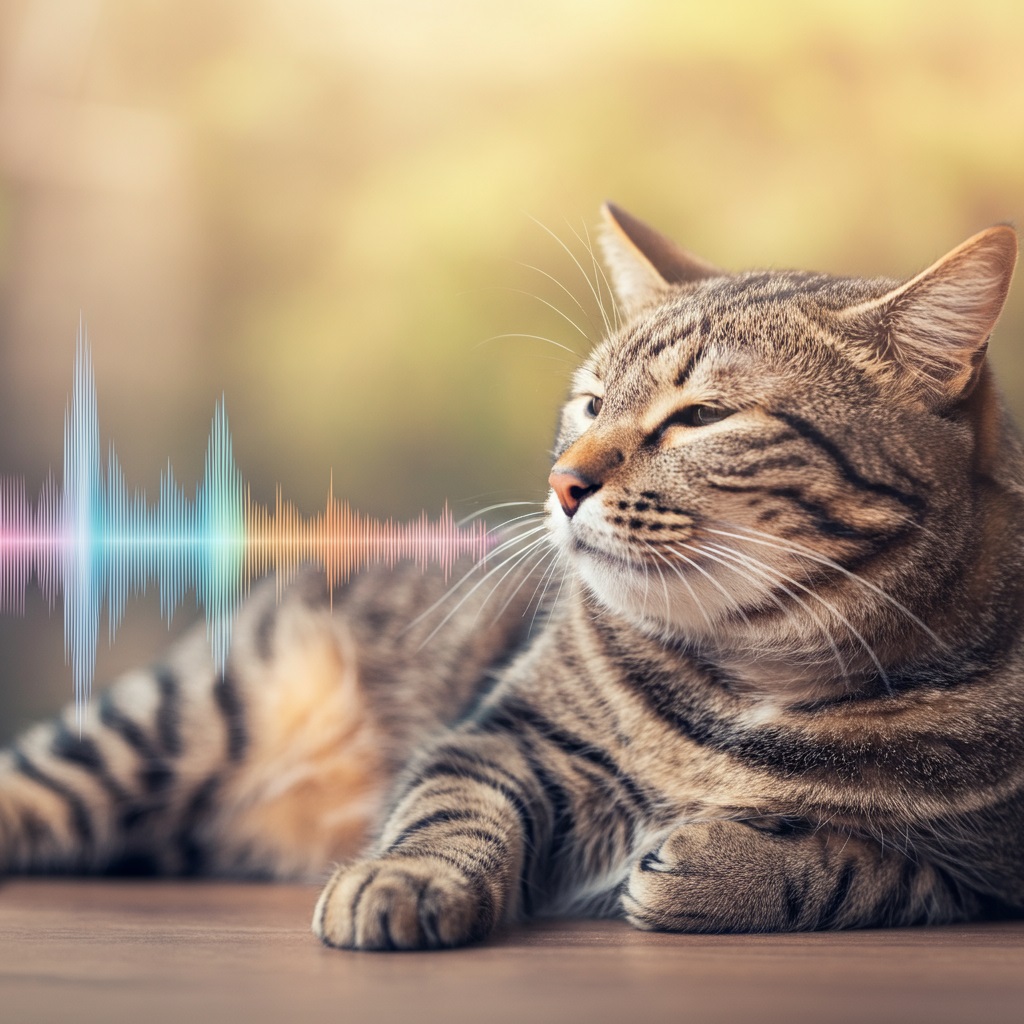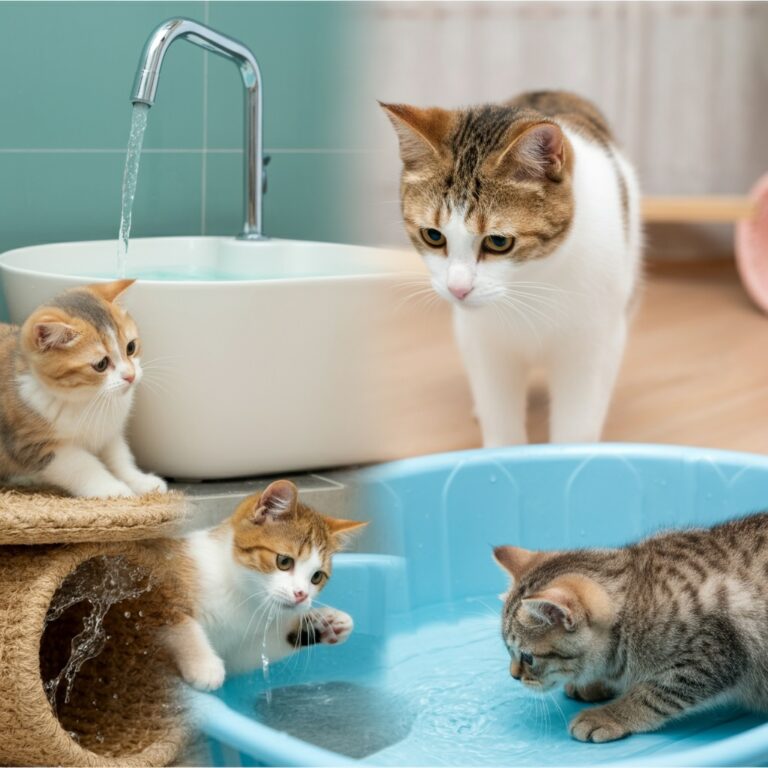
There’s something almost magical about the gentle rumble of a cat’s purr. As you stroke your feline companion, that rhythmic vibration seems to melt away stress and create an instant sense of calm. But what if this wasn’t just your imagination? What if science could prove that your cat’s purr actually has genuine healing properties?
Recent research has uncovered fascinating evidence that cat purring operates on frequencies that can promote bone healing, reduce pain, and even lower blood pressure in humans. This isn’t just folklore or wishful thinking from devoted cat owners—it’s backed by legitimate scientific studies that reveal the sophisticated biological mechanisms behind one of nature’s most soothing sounds.
The frequency range of cat purrs, typically between 20-50 Hz, aligns remarkably well with frequencies used in therapeutic medicine for bone repair and pain management. This discovery has opened up entirely new avenues of research into animal-assisted therapy and the potential medical applications of purring vibrations.
Understanding the science behind purring not only deepens our appreciation for our feline friends but also provides valuable insights into how simple, natural phenomena can have profound effects on health and well-being.
What Is Purring and How Do Cats Create This Sound?
Purring is a continuous, low-frequency sound that cats produce through a complex coordination of their larynx, diaphragm, and neural pathways. Unlike meowing, which cats primarily use to communicate with humans, purring serves multiple biological and social functions that benefit both the cat and those around them.
The physical mechanism behind purring involves rapid muscle contractions in the cat’s larynx and diaphragm. These contractions occur at a rate of 20-50 times per second, creating vibrations that resonate through the cat’s body and produce the characteristic rumbling sound we hear. The process is so efficient that cats can purr continuously while breathing both in and out.
Interestingly, not all cats purr in the same way. Domestic cats, along with some smaller wild cat species like ocelots and servals, can purr continuously. However, big cats like lions and tigers can only make purring sounds while exhaling, which is why their vocalizations sound different from your house cat’s steady rumble.
The neural control of purring originates in the cat’s brain, specifically in a neural oscillator that sends repetitive signals to the muscles controlling the larynx. This explains why cats can purr even when they’re unconscious or severely injured—the process is so fundamental to their biology that it operates almost automatically.
The Healing Frequencies: Why 20-50 Hz Matters
The frequency range of cat purrs isn’t arbitrary—it falls within a spectrum that has remarkable therapeutic properties. Medical researchers have discovered that vibrations in the 20-50 Hz range can stimulate healing in bones, reduce inflammation, and promote tissue repair.
This frequency range is particularly effective for bone healing because it matches the natural resonant frequency of bone tissue. When bones are exposed to these vibrations, they respond by increasing bone density and accelerating the healing process. This principle is already being used in human medicine through devices called bone growth stimulators, which use similar frequencies to treat fractures and osteoporosis.
The 25 Hz frequency, which sits right in the middle of most cats’ purring range, has been shown to be especially effective for bone repair. Studies have demonstrated that exposure to 25 Hz vibrations can increase bone strength by up to 20% and significantly reduce healing time for fractures.
Beyond bone healing, these frequencies also affect soft tissues. The vibrations can improve blood circulation, reduce swelling, and help repair muscle damage. This explains why many cat owners report feeling better after spending time with a purring cat—the therapeutic effects are genuine and measurable.
Scientific Evidence for Purring’s Healing Effects
Multiple scientific studies have documented the healing properties of cat purrs, providing concrete evidence for what cat owners have long suspected. Research conducted at the Fauna Communications Research Institute found that domestic cats purr at frequencies that coincide with established healing frequencies used in medical treatments.
One groundbreaking study published in the Journal of Nervous and Mental Disease examined the bone density of cats compared to dogs of similar size. Despite cats’ relatively sedentary lifestyle compared to dogs, researchers found that cats maintain significantly stronger bones. The study suggested that the constant vibrations from purring may act as a form of low-impact exercise that keeps their bones healthy.
Research has also shown that the frequencies produced by purring can help heal soft tissue injuries. A study involving rabbits with muscle injuries found that exposure to 25 Hz vibrations significantly reduced healing time and improved the quality of tissue repair. While this study didn’t use actual cat purrs, it used the same frequencies that cats naturally produce.
Human studies have provided equally compelling evidence. Research conducted at various medical institutions has shown that exposure to low-frequency vibrations similar to cat purrs can reduce blood pressure, decrease heart rate, and lower stress hormones like cortisol. These effects can occur within just a few minutes of exposure to the therapeutic frequencies.
How Purring Benefits Human Health
The health benefits of cat purring extend far beyond the cat itself. Humans who regularly interact with purring cats show measurable improvements in various health markers, from cardiovascular function to mental well-being.
Cardiovascular Benefits
Studies have consistently shown that cat owners have lower blood pressure and reduced risk of cardiovascular disease. The rhythmic vibrations of purring can help regulate heart rate and promote relaxation of blood vessels. One study found that cat owners had a 40% lower risk of heart attack compared to non-pet owners, with purring potentially playing a significant role in this protective effect.
Pain Relief and Inflammation Reduction
The frequency of cat purrs can act as a natural pain reliever. The vibrations stimulate the production of endorphins and can interfere with pain signal transmission to the brain. Many people report that their chronic pain feels more manageable after spending time with a purring cat.
Continues after advertising
The anti-inflammatory effects of purring frequencies have been documented in several studies. The vibrations can help reduce swelling and promote the healing of injured tissues, making purring a form of natural vibrational therapy.
Mental Health and Stress Reduction
The psychological benefits of cat purring are equally impressive. The sound and vibrations trigger the release of serotonin and dopamine, neurotransmitters associated with feelings of well-being and happiness. This explains why many people find the sound of purring deeply calming and comforting.
Research has shown that listening to cat purrs can reduce anxiety levels and improve mood within minutes. The low-frequency vibrations may also help regulate breathing patterns and promote deeper, more restful sleep.
The Evolutionary Advantage of Purring
From an evolutionary perspective, purring serves multiple survival functions that have helped cats thrive as a species. The healing properties of purring provide significant advantages for cats in the wild, where injury could mean the difference between life and death.
Cats sleep for 12-16 hours per day, which would typically lead to bone weakness due to lack of activity. However, purring during rest periods acts as a form of passive exercise that maintains bone strength and muscle tone. This allows cats to remain agile and strong despite their sedentary lifestyle.
The healing frequencies also help cats recover more quickly from injuries. In the wild, a cat that can heal faster has a better chance of survival. The ability to self-medicate through purring represents a remarkable evolutionary adaptation that provides both physical and emotional benefits.
Purring also serves important social functions. Mother cats purr to communicate with their kittens before their eyes and ears open, creating a vibration that helps newborns locate their mother and find milk. This early exposure to healing frequencies may contribute to the rapid growth and development of young cats.
The calming effect of purring helps reduce stress and aggression within cat colonies, promoting social bonding and cooperation. This social aspect of purring has likely contributed to cats’ successful domestication and their ability to form strong bonds with humans.
Practical Applications and Future Research
Understanding the science behind cat purring has opened up exciting possibilities for practical applications in human medicine and therapy. Researchers are exploring ways to harness these healing frequencies for various medical treatments.
Medical Device Development
Several companies are developing medical devices that mimic the frequencies of cat purrs for therapeutic purposes. These devices could potentially be used to treat conditions like osteoporosis, chronic pain, and muscle injuries. The advantage of using purring frequencies is that they’re completely natural and have no known negative side effects.
Animal-Assisted Therapy Programs
Hospitals and care facilities are increasingly incorporating cats into their therapy programs, partly due to the recognized healing benefits of purring. These programs show promising results for patients dealing with chronic pain, depression, and anxiety.
Sound Therapy Applications
Recordings of cat purrs are being used in sound therapy sessions to promote relaxation and healing. While recorded purrs may not provide the full vibrational benefits of a live cat, they still offer psychological benefits and can help reduce stress and anxiety.
Future Research Directions
Scientists are continuing to investigate the full scope of purring’s healing properties. Current research is examining how different purring frequencies might be optimized for specific medical conditions. There’s also growing interest in understanding how the combination of sound and vibration creates the therapeutic effects.
Researchers are also studying whether exposure to purring during childhood might have long-term health benefits, and whether regular interaction with purring cats could help prevent certain age-related health conditions.
Maximizing the Healing Benefits of Your Cat’s Purr
If you’re a cat owner looking to maximize the healing benefits of your pet’s purr, there are several strategies you can employ. Creating an environment that encourages purring and learning how to properly interact with your purring cat can enhance the therapeutic effects for both of you.
Most cats purr when they feel safe, content, and relaxed. Gentle petting, especially around the head and chin, often triggers purring. Finding the right spots that your cat enjoys will increase the likelihood of sustained purring sessions.
Positioning yourself so that you can feel the vibrations enhances the therapeutic benefits. Many cat owners find that having their cat purr on their chest or lap provides the most noticeable health effects. The direct contact allows the healing vibrations to penetrate your body more effectively.
Regular purring sessions can provide cumulative benefits. Setting aside time each day for quiet interaction with your cat can help establish a routine that promotes healing and stress reduction for both you and your pet.
Read More👉 Pet Probiotics: Hype or Health Essential?
The Remarkable Gift of Purring
The science behind cat purring reveals one of nature’s most elegant healing mechanisms. What seems like a simple expression of contentment is actually a sophisticated biological process that can promote healing, reduce pain, and enhance well-being in both cats and humans.
The convergence of frequency therapy and natural animal behavior demonstrates how much we still have to learn from the natural world. As research continues to uncover the full extent of purring’s therapeutic properties, we gain deeper appreciation for the remarkable evolutionary adaptations that make our feline companions such effective healers.
Whether you’re a longtime cat owner or someone considering adding a feline friend to your family, understanding the science behind purring adds another dimension to the human-cat bond. The next time you hear that familiar rumble, you’ll know that you’re not just listening to a happy cat—you’re experiencing one of nature’s most effective forms of sound therapy.
The healing power of purring represents just one example of how animals can contribute to human health and well-being. As we continue to explore these connections, we open new possibilities for natural, non-invasive approaches to healing that harness the wisdom encoded in millions of years of evolution.






